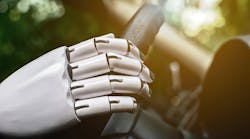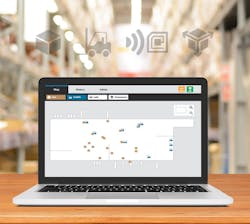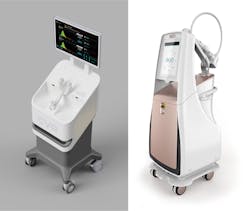Top 5 Technology Trends for 2022
This article is part of the 2022 Electronic Design Forecast issue
Looking to 2022, expect continued technological progress in everything from electric vehicles to medical technology. Here’s a view of the anticipated technology advances from a leading product development services firm, where we see firsthand the latest and newest technology ideas arriving every week.
1. Infrastructure for Electric Vehicles (EVs)
The real race in EV technology involves the background infrastructure to support a very rapid transition in new vehicle manufacture from the internal combustion engine (ICE) to electric power. This includes everything from deployment of charging and power management from the home to centralized charging stations. Certainly, such technology is widespread in some areas, but it will need to scale rapidly to accommodate this transition in the near term.
In addition, the increased use of energy for EVs will drive the need for technology improvements in backend infrastructure to store and distribute electric power. The challenge grows with the trend toward renewable-energy sources where generation can vary by weather and time-of-day factors.
2. Robotics
We’ve seen applications for robotics in the industrial space for years. During the last couple of years, the technology has become more visible in the consumer space. This includes systems as simple as floor-cleaning products for the home and robots in supermarkets to cleanup spills in the aisles and bricklaying robots for the construction industry. Robots also are commonly found in a variety of medical procedures. The trend will continue as the algorithms become more intelligent and the physical device paradigms evolve. Much investment is going into robotics in new domains.
As the technology advances, robots will continue to become more dexterous, showing off improved fine motor skills. In manufacturing, we expect robot development to continue to accelerate in uses requiring task-specific capabilities, suitable for small manufacturers. Given the supply-chain problems, which aren’t going away any time soon, we also expect to see continued development of robotics applied to transportation and logistics problems.
3. Continuing Supply-Chain Issues
This subject has been broadly explored in the media, exposing the severe effect downstream in development of new products. Unfortunately, the situation will not likely improve much any time soon.
To help deal with this challenge in 2022, expect companies to design products with greater ability to quickly and easy morph low-level configurations to enable the use of parts from multiple sources. Though it’s always been a good practice to design products with second sourcing in mind, in 2022, this becomes even more critical as parts shortages continue with a high level of unpredictability.
4. IoT Becomes Commoditized
For a while, IoT was the hottest trend at the forefront of product development. While smart connected solutions will continue being developed, it’s no longer on the fringe of technology. It’s not commoditized yet, but many of the problems needing IoT solutions have already been realized. More IoT solutions are on the way, but this has become more of a table stakes proposition in new product development.
5. Emphasis in MedTech Marches On
There’s a huge expansion going on in this domain (worthy of an article on its own). One intriguing aspect is progress on data acquisition and analytics related to pharmaceuticals, from multiple vendors being selected for optimal outcome for a specific individual. The goal here is to enable clinicians to prescribe the best medicine for a particular patient, with their own profile, from among numerous competing medication options.
With each drug company pushing its own medications, it’s hard to sift through all of the data to make a comparison leading to an optimal choice. Doctors don’t have enough time to do thorough comparisons and then match them to individual patients. In essence, this is an early stage of applying artificial intelligence (AI) to a medical practice, with technology helping the physician make optimal choices. Such an application won’t be solved in a year, but work is in progress.
Another area of advancement to look for in 2022 is technology that makes remote care a better experience for the patient without sacrificing the need to have diagnostic data at the time of the virtual interaction. Much has been done already, but work continues in development of new and/or improved voice assistants, streaming technology, and remote/home sensors. In addition, wearable computing is making a comeback through companies such as Opticsurg.
These are just a few of the upcoming trends for 2022. By this time next year, a raft of new major technologies will have emerged that impact the products we develop and how we apply technology in our lives. On the longer horizon, development of technology for sustainable energy generation, environmental cleanup, and mining of recyclable materials should be expected to ramp up as more nations commit to dealing with global-warming trends.
Read more articles in the 2022 Electronic Design Forecast issue


